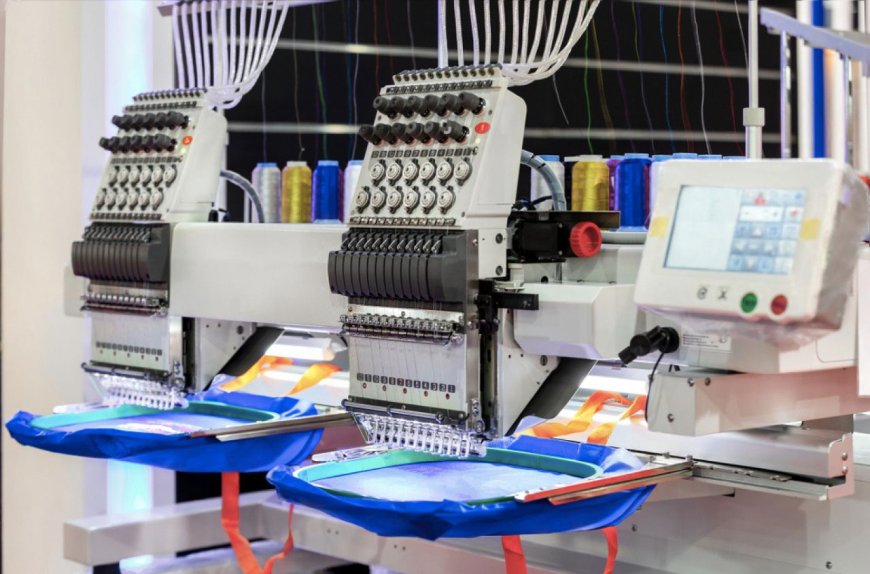Top Embroidery Digitizing Mistakes (And How to Avoid Them)
Avoid common embroidery digitizing errors that ruin designs! Learn professional fixes for puckering, thread breaks, and distorted logos in this essential guide

Introduction
We've all experienced that sinking feeling when an embroidery design stitches out completely wrong. The text becomes unreadable, the edges pucker, or the threads keep breaking. What many embroiderers don't realize is that 90% of these problems start withembroidery digitizingmistakesnot the machine or operator.
After analyzing hundreds of failed embroidery projects and consulting with professional digitizers, we've identified the most commonembroidery digitizingerrors andmore importantlyhow to prevent them. Whether you're handlingembroidery digitizingfor your own designs or working with a service, these insights will save you time, materials, and frustration.
1. Ignoring Fabric Type
The Mistake:
Using the same digitizing settings for all fabrics.
Why It Fails:
-
Heavy denim needs different stitch density than stretchy knits
-
Towels require special loop compensation
-
Thin fabrics show through with standard underlay
The Fix:
-
Always specify fabric type when digitizing
-
Create separate files for different materials
-
Test stitch on actual project fabric
2. Poor Underlay Choices
The Mistake:
Using default underlay settings for every design.
Disaster Results:
-
Fabric distortion and puckering
-
Stitches sinking into material
-
Unstable edges on satin stitches
Professional Solutions:
-
Use edge run underlay for crisp borders
-
Add zigzag underlay for stability on stretch fabrics
-
Reduce underlay density for delicate materials
3. Overlooking Stitch Direction
The Mistake:
Letting software auto-set all stitch angles.
Visible Problems:
-
Uneven light reflection makes designs look patchy
-
Fabric pulls in one direction causing distortion
-
Weak structural integrity
Smart Approaches:
-
Vary stitch directions within elements
-
Follow natural fabric grain when possible
-
Use 45 angles for most fill areas
4. Incorrect Density Settings
The Mistake:
Using the same density for all design elements.
Consequences:
-
Too dense = stiff, puckered results
-
Too light = fabric shows through
-
Inconsistent = poor visual quality
Density Guidelines:
-
Small text: 0.4-0.5mm
-
Fills: 0.45-0.6mm
-
Outlines: 0.3-0.4mm
-
Adjust for fabric thickness
5. Neglecting Pull Compensation
The Mistake:
Not accounting for thread pull during stitching.
Obvious Symptoms:
-
Circles become oval
-
Square corners round off
-
Letters appear squashed
Compensation Techniques:
-
Add 5-15% extra width to satin stitches
-
Overlap elements slightly
-
Test stitch and measure adjustments
6. Complex Designs at Small Sizes
The Mistake:
Trying to cram too much detail into small areas.
Failed Results:
-
Details become unreadable
-
Threads bunch together
-
Needles break frequently
Size Recommendations:
-
Minimum text height: 0.25" (6mm)
-
Simplfy logos below 2" (50mm)
-
Remove tiny interior details
7. Poor Pathing and Sequencing
The Mistake:
Letting software determine stitch order randomly.
Visible Issues:
-
Excessive jumps and trims
-
Unnecessary color changes
-
Long travel stitches show on back
Professional Pathing:
-
Group colors intelligently
-
Stitch inside-out for fills
-
Minimize jumps between elements
8. Ignoring Hooping Considerations
The Mistake:
Digitizing without accounting for placement.
Common Problems:
-
Designs cross seam lines
-
Elements get distorted near edges
-
Cap designs don't follow curvature
Placement Awareness:
-
Mark seam allowances in software
-
Create separate files for different placements
-
Adjust for hat curvature
9. Skipping the Test Stitch
The Mistake:
Sending files straight to production.
Costly Results:
-
Wasted materials on failed runs
-
Missed digitizing errors
-
Unhappy clients
Smart Practice:
-
Always stitch a sample
-
Use scrap fabric first
-
Check for registration issues
10. Using Auto-Digitizing Exclusively
The Mistake:
Relying 100% on auto-digitizing software.
Quality Issues:
-
Poor stitch type choices
-
Random density variations
-
No fabric-specific adjustments
Balanced Approach:
-
Use auto-digitizing as starting point
-
Manually refine all elements
-
Adjust for specific project needs
How to Prevent These Mistakes
For DIY Digitizers:
-
Invest in quality training courses
-
Practice with simple designs first
-
Build a library of fabric-specific presets
When Using a Digitizing Service:
-
Provide detailed project information
-
Request test stitches for critical projects
-
Ask about their revision policy
Professional Fixes for Existing Problems
For Puckering:
-
Reduce overall density
-
Change underlay type
-
Use stronger stabilizer
For Thread Breaks:
-
Increase stitch length
-
Adjust tension settings
-
Check needle size
For Distorted Shapes:
-
Add pull compensation
-
Modify stitch directions
-
Resequence pathing
Conclusion
Great embroidery begins with proper digitizing. By avoiding these common mistakesor knowing how to fix themyou'll achieve professional results consistently. Remember that even experienced digitizers make adjustments; the key is testing and refining until every design stitches perfectly.
Whether you're digitizing in-house or working with a service, keep this guide handy as a checklist for quality control. Your machine, your materials, and your clients will thank you for the attention to detail.
Now that you know what to watch for, your next embroidery project will be your best one yet!

































